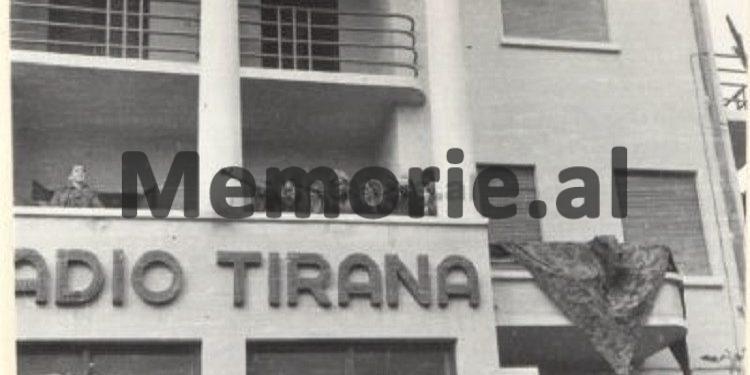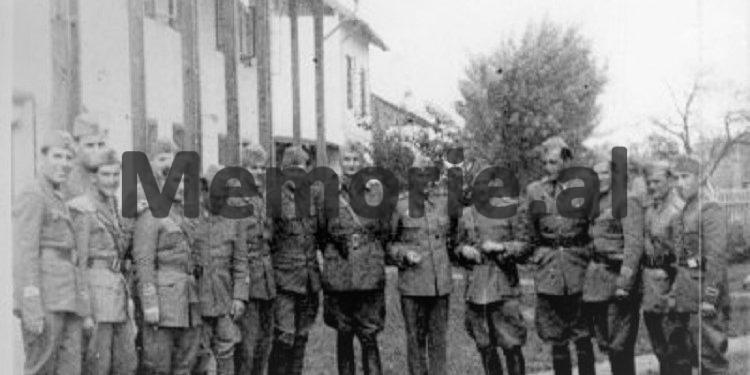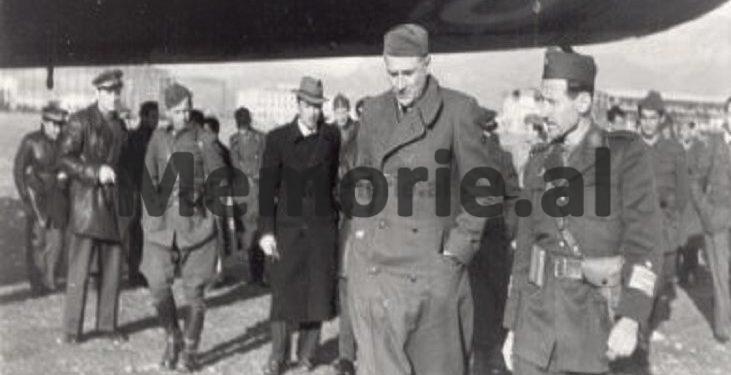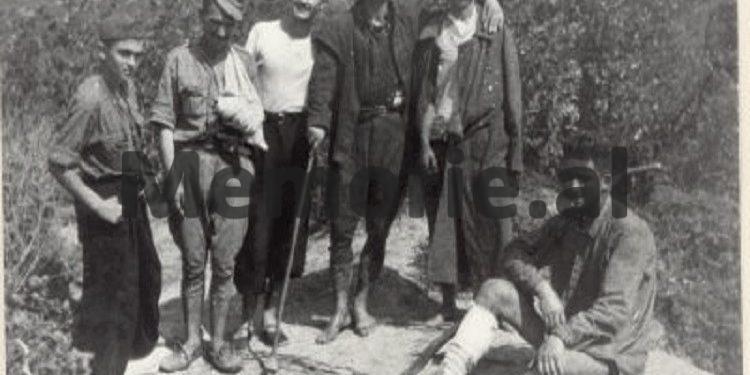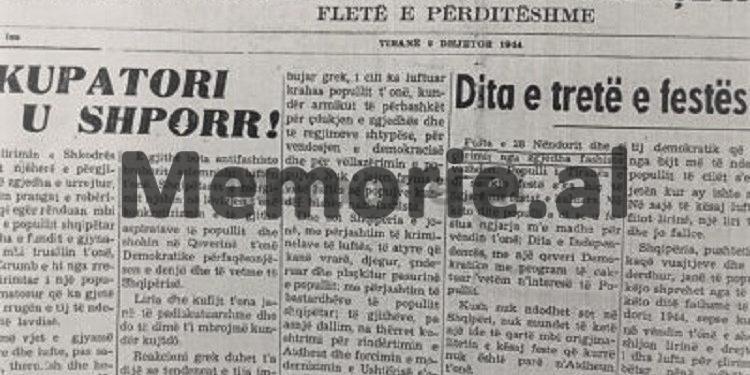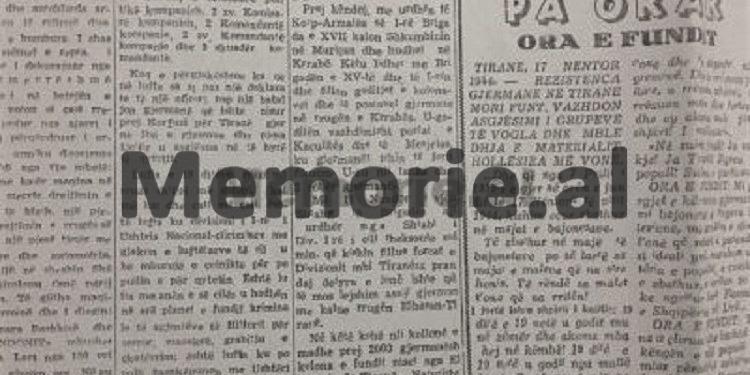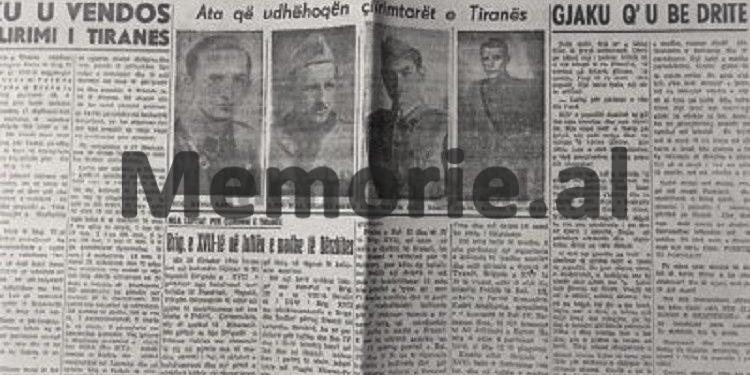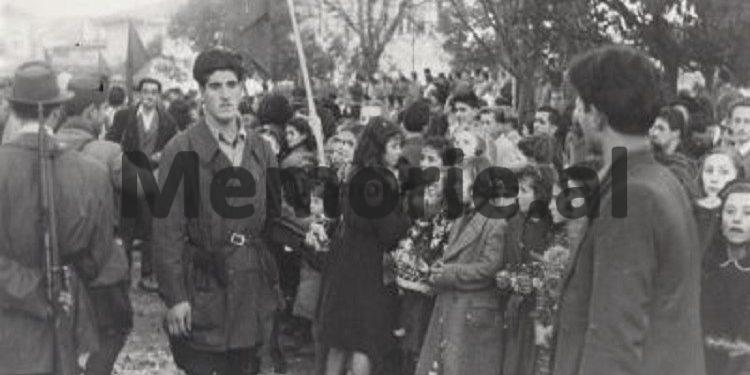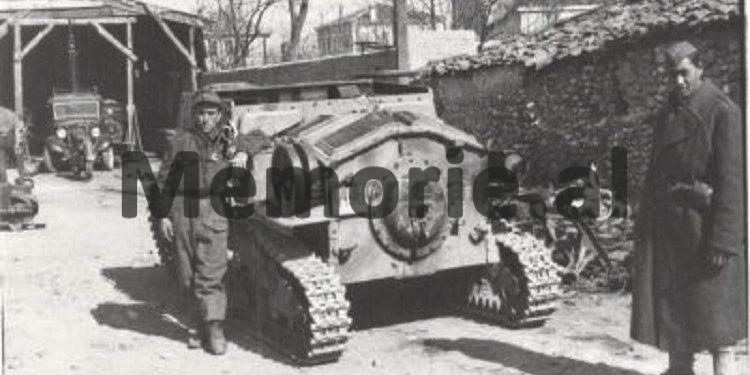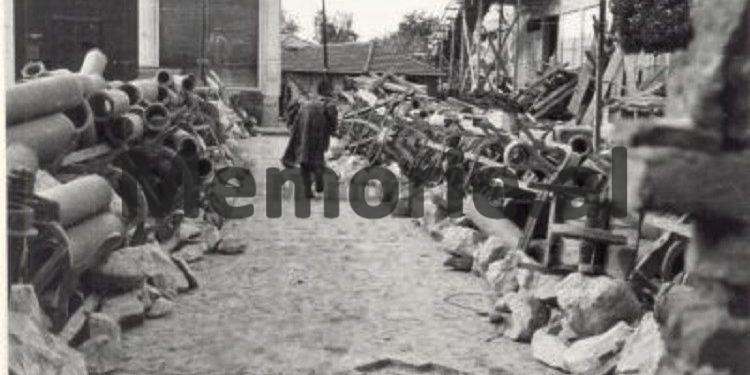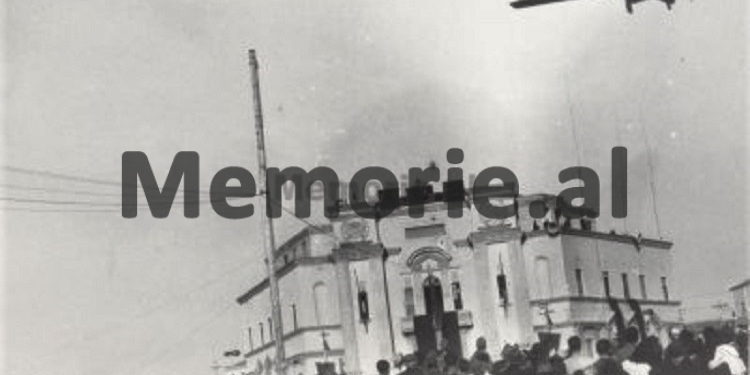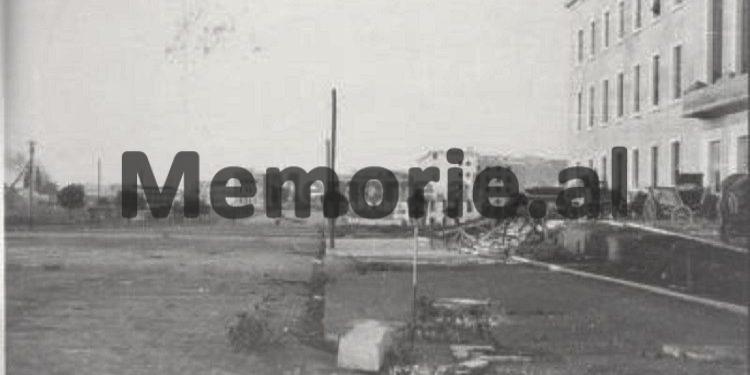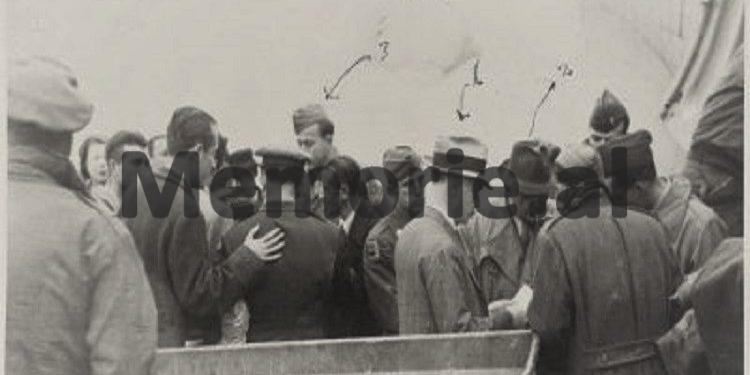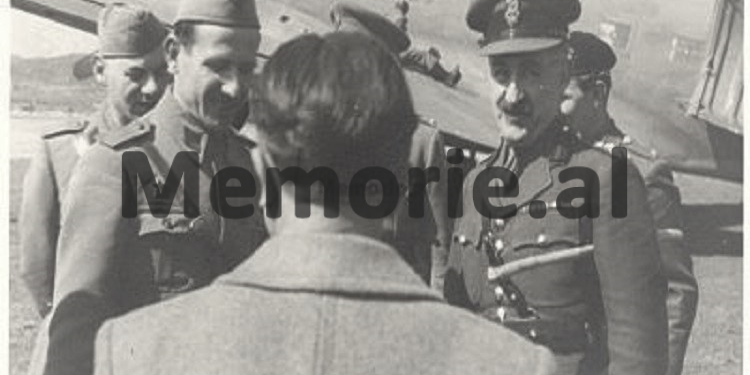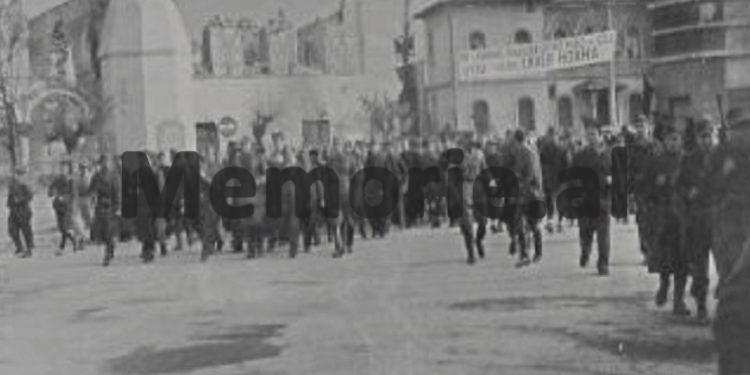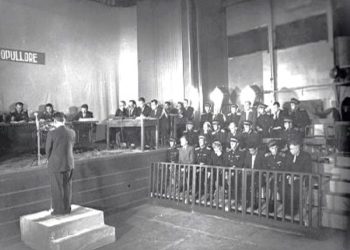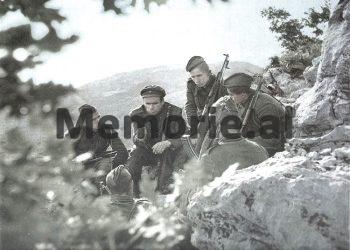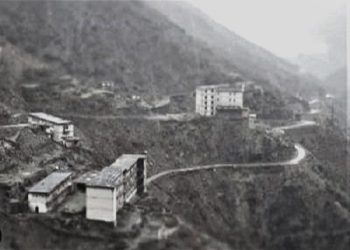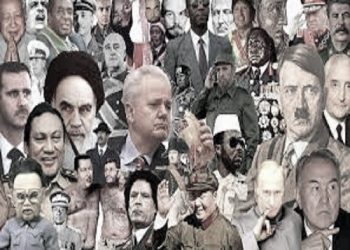Dashnor Kaloçi
Memorie.al/publishes historical documents with relevant facsimiles and evidence that shed light on the truth of the “Battle of Musketeers” held on November 14, 1944 when the Anglo-American Allied aviation bombed a German convoy coming from Greece causing hundreds killed and many wounded. How was that event and the “Battle for the Liberation of Tirana” reflected in the War Bulletins of the partisan forces issued by the Communist Party in those days and how were those events retouched and deleted years later and in the reprint of those bulletins in the book “Union” published by the Academy of Sciences of Albania, the role and contribution of the Anglo-Americans was completely deleted… ..
Full 75 years ago, on November 14, 1944, a large German carted convoy, retreating from Greece and moving on the Elbasan-Tirana road, was hit by heavy fire from Anglo-American allied aviation, and yes it was almost completely destroyed, leaving many soldiers and officers killed, as well as much military material, loot and various weapons at its disposal. This event, which is rightly considered one of the greatest losses of Hitler’s Nazi forces in Albania, during those days was widely reflected in the war bulletins of the partisan forces of Enver Hoxha’s National Liberation Army issued by the Communist Party, where the crucial role of allied aviation was also noted, which made possible the annihilation of German forces in the battle of Musketeers. Unlike what really happened in Mushqeta and what was written at that time in the bulletins of the partisan war, as was done with all the historiography of the communist regime of Enver Hoxha, this event was also glorified, distorted and manipulated in all aspects of her. It even went so far as to republish the war bulletins in the book “Union” and its bulletins (June-November 1944) published by the Academy of Sciences in Tirana in 1988, the role of Anglo-American aviation not only in Musketeers , but also in other battles where they took an active part, was deleted altogether, or was scarcely mentioned in just one sentence. But this, the ignorance and denial of the contribution of the Anglo-American allied forces in the fight for the liberation of Albania during the years 1940-1944, is more flagrant in the battle of Mushqeta and that for the liberation of Tirana, where they had a role decisive. In this article we are giving in full and without change some of the war bulletins (republished in 1988), dedicated to the battles of Mushqeta and that for the “Liberation of Tirana”, where the role of the Anglo-American allies is not mentioned at all… Also, regarding these events, in addition to these sources of partisan forces, we are giving one of the testimonies of the former Albanian Prime Minister, Ibrahim Bicaku, the man who saved Tirana from the massacre that the Germans wanted to commit in revenge for the losses suffered in Mushqeta. , confessed by him in Burrell Prison where he was serving his sentence as “enemy of the people”.
In Krrabë
On 14 November a convoy of 3,000 men (the Steyrer Fighting Group consisting of Corps XXII and Division 133 units withdrawing from Greece) accompanied by a large number of vehicles, carts and horses moved from Elbasan to Tirana, in the direction of the capital. The forces of the IV S. Brigade of the VIII S. Brigade and the VII S. Brigade became a sound ambush near Musketeers. The attack began fiercely. At 17.00 our forces, at the same time, tightened the iron ring of the siege. When November 15 dawned, all enemy forces were completely surrounded. The Germans seeing the certain death, after putting to use all the weapons and tanks, jumped on the attack to break the link. But in vain. The partisans thwarted all the attempts of the enemy and after refusing to surrender, all fire was concentrated on them. The fighting has been very fierce and close. After a day of fierce fighting, all opposing forces are defeated and annihilated. More than 1,000 people were killed on the battlefield, including many officers. Over 200 others are being pursued by our forces in the forests of Mushqeta and Bërzhita. A large number of prisoners were taken, including 3 officers, countless material, 400 horses and mules, 30 cars, 1 armored vehicle in good condition, pristine carts filled with material, rifles and a large amount of ammunition, which has not yet been counted. Details later. At the same time, the forces of the IV S. Brigade and the VIII S. Brigade annihilated between the Farka bridge and the Erzeni bridge a German force assisted by 4 tanks that had been able to get out of the siege of Mushqeta. A part of them of 100 people who were able to reach Tirana, suffered the same fate from the forces of the I S. Brigade which they completely exterminated.
(“Bulletin of the National Liberation War of Tirana”, Year I, no. 41 November 18, 1944)
Battle of Musketeers
If we compare the defeat suffered by the Hitlerites in the last battle, which gave the liberation of the capital, with what they suffered in Mushqeta, the latter overcomes it. The Hitlerites in our country have not suffered such annihilation. Our heroic army has always thwarted the plans of the enemy, from his wide-ranging offensive to their final plan aimed at making our country a base of retreat. Actions for the failure of Hitlerite and treacherous plans of any nature, are glorious pages of our history that brought the situation on this lucky day for the people. But the battle of Musketeers, taken only in the context of the present situation and the enemy losses, whether for the maneuvering of our forces, or for the losses of the enemy in its desperate state, or for the complete liberation of our homeland, is one of the greatest and most decisive, if not the greatest of the last battles that ended the liberation of Tirana. By reading only the communiqué or writing about the fist that the enemy ate in this battle we cannot strengthen a clear idea of what was done in Musketeers. Whoever looks at the fortresses of the Municipality and the Old Mosque, the burned cars on the streets, the corpses and the material left by the enemy in Tirana, thinks that there is no way to defeat otherwise; but when you go along the Tirana-Elbasan road, you do not see the losses suffered inside the enemy city. Starting from the New Palace to Bërzhitë, I think that this is the biggest defeat that is talked about so much, especially when you look, except for the destroyed cars and the quintals with dynamite that the enemy has left on the bridge of Erzeni and Farka, that s’ he was given time to blow them up. Look here at the wrecked cars, carts, horses, corpses. Say to yourself that this will be the greatest defeat of the enemy. How to cross this area in front of a pile of horses and carts, cars that fell into the ditch, vehicles in good condition, carts full of loot that were stolen by the Hitlerites in Greece and Albania, and weapons that your eyes have not seen. You can count the materials and bodies up to Bërzhitë, but from now on you will lose the number even if you walk slowly. Look right and left, bloodstream really. Carcasses, weapons and very heavy tools rushed furiously away from the road as if by some extraordinary physical force, which does not occur to you how it happened. I guess this carnage can only continue until you reach the entrance of the road, no matter how great the war. As you reach the turn of the road, the stacks become more frequent. The carriage vehicles seem to have pushed each other. Fallen material, spread densely and irregularly as if a strong earthquake had fallen from those flattening. Further down the road on the edge of small hills by the river, four large field caliber cannons were left in place with barrels that seemed to hit each other, though they were used against our Army in all directions. A little further fills the number of mobile kitchens for a division. Carriers with full trailers, long carts, cars with anti-aircraft machine guns raised in the direction of the sky, small cannons, light and heavy machine guns, cars, rifles and medical supplies and a variety of things of every color and type. Among them is a baby pillow, which was certainly abducted by the enemy in a family in Elbasan. Again, the corpses of slain horses and larger streams of blood. Above the edge of the gardens, by the river, are seen the horses that have escaped this slaughter. It is said that there are also many hidden enemies who are handing over the surrounding villages. He walks on, a slain captain inside the car, the vehicle completely destroyed, motorcycles released on the road and the same scene as before. He still walks on roads limited by the material, trucks on the alleys, on the sidewalk and gets stuck on a sloping elbow down to the right where a small stream flow. The material and the bodies are heavily stacked and in a messy way. Lying horses and corpses leave the impression that knives, not bullets, acted here. The creek looks like a carnage canal, inside it a slain enemy has fallen into the water. He overcomes further, again and again the same scene continues. Countless horses, corpses, vehicles and chariots, war material and looted loot. The road looks as if the soot of the city has fallen on it. Passes further, other cannons, weapons and ammunition. In a flag-chariot with a broken cross, inserted inside like a stolen booty as barely discernible. It gives you an overview of the current situation of Nazi Germany, which seeks to hide its criminal intentions, now that the storm launched against the peace-loving and innocent peoples has turned on its head. The appearance of the flag near the end of this long mosaic string shows, on the one hand, the strong and lightning strike of our Army, which made the enemies not know where to hold it, until they abandoned the flag under it. which Hitler’s superior race would establish the new order in Europe and then in the world? On the other hand, this proves that the Hitlerites are degenerate cats, without any principle or sign. Two kilometers further from the village of Ibë, two destroyed tanks left the impression that the enemy column was not going towards Tirana, but towards Elbasan. This scene is not completed with so much. Throughout the area where the fighting took place, to the right and left of the road, in the woods and in the pits, corpses and materials are seen that do not appear without asking. The severity of the battle has left its mark on the sides of roadside houses, to which bullets have given the appearance of soft ground after a hailstorm. Many cars have become full holes and dirt on the side of the pavement as if in a rage. When passing through it is unbelievable that there were only 2000-3000 enemy soldiers. Based on the material and means of transport, at least one motorized division is counted. The booty is so numerous that it leaves the impression not of an army, but of wild horses in the time of the barbarians. Had these forces arrived in Tirana, the capital would not have been liberated so quickly and so well. Their defeat saved Tirana from the danger of destruction and mass massacres. When you compare the numerous and heavy means of the enemy, his great marching army and the nature of the country, the strong positions of the enemy, our armaments and positions, you wonder how it was possible to defeat all these forces only by the three battalions of 4th S Brigade, all three companies of the 17th Brigade and several units of the 8th Brigade. Without the ability of our Command is added the unparalleled heroism of the partisans, who knew how to put their chests against the cannons to protect the people. Our heroic army, seeing what a catastrophe it would be for the people, the passage of these beasts who leave behind nothing but blood and rubble, were thrown with selflessness as always and threw to the ground the enraged beasts before carrying out the purpose of their ordinary. Our army, the sons of the people, which liberated most of the country, was ready and in this case to act properly in an unequal war that lasted 36 hours, annihilating the enemy. The Battle of Musketeers is rare in every respect.
(“Bulletin of the National Liberation War” of Tirana. Year I, no.45 22 November 1944)
“Prime Minister Bicaku saved Tirana from revenge for Mushqetan”
Ibrahim bey telephoned General von Keiter in Berlin, as the Germans would shoot 100 civilians for every 1 German soldier killed
Contrary to what has been consistently written for almost half a century by the historiography of Enver Hoxha’s communist regime, “The Battle of Mushqeta” has the other side of the coin. Which is made known both by eyewitnesses who closely followed the event, as well as by archival documents or memoirs of former German and Anglo-American servicemen, which coincidence led them to clash between them in a foreign country. From all these sources, it is known that the blow and the great losses suffered by the German troops in Mushqeta did not come from the partisan forces (which were nevertheless positioned in anticipation of the German convoys withdrawing from Greece), but from the Anglo-American allied aviation, who carried out several air bombardment incursions along the entire Elbasan-Tirana road axis, where German convoys were moving. This came after an urgent radio request made by Enver Hoxha’s General Staff to the Allied Command for the Mediterranean in Bari, Italy, which immediately authorized its air force to strike at the Germans in the Mushqeta area. As a result of that bombing, there were significant losses not only in the German forces (there are reports of many killed), but from the fire of the allied planes, many partisans who had ambushed the German convoy were killed. But despite the blow of the Anglo-American planes and the hosts of the partisan forces, a part of the German forces (according to the bulletins of the partisan war, there is talk of 100 forces) managed to break the siege and enter Tirana. These forces in the capital were awaited by Captain Leader, the commander of the German garrison in Tirana (there were 320 forces under command) to join and then travel in the direction of Shkodra. Upon entering Tirana, the German command and the convoy that was hit in Mushqeta communicated to Prime Minister Ibrahim Bicaku that according to the laws of war they had, they would shoot 100 innocent civilians for one of their soldiers killed. Prime Minister Bicaku immediately telephoned Berlin, communicating with his close friend, General Von Keiter, chief of staff of Hitler’s Nazi army. (Ibrahim Bicaku and Von Kajter were known since the First World War, when Kajter, who served as a lieutenant colonel in the ranks of the Austro-Hungarians in Albania, asked Aqif Pash of Elbasan and took his son, Ibrahim, to be educated in Vienna). Hitler’s Chief of Staff responded positively to the prayer of his Albanian friend, Bicaku, whom he had kept for 8 years at his home in Vienna, ordering the commander of the Tirana garrison, Captain Leader, to obey: “Follow the order of the Albanian Prime Minister “. Ibrahim bey Bicaku testified to all this in the Burrel prison (where he suffered for 18 years) and the question of some of his accomplices why he surrendered himself to the partisans and did not leave Albania together with the Germans who offered him a personal plane, he he replied: “Leaving the homeland, especially at critical moments, is my fault.”
(“Bulletin of the National Liberation War” of Tirana. Year I, no. 315 November 1944)
Thus, he fought for the liberation of Tirana
At Kodra e Kuqe the enemy tank makes great destructions and badly damages the wealth of our people. Shaqir Bala from Tirana and Nikolla Lena from Pogradec, on their own initiative, left their positions and placed the machine gun in the middle of the road. From there they opened fire against the tank from 30 m. The Germans, enraged by the heroism of our comrades who were so boldly exposed to death, come out of the tank and attack to capture them alive. The Nazis had not counted the courage and partisan will. Most of them fell dead or wounded, from the bullets of the partisan machine gunner. The tanker, seeing his Nazi comrades being killed, furiously launches the tank forward. The fight continued close, partisan chest with the enemy tank, until the comrades fell from the shells of the enemy cannon. A comrade was wounded in our positions in the new Prison. Maksut Rexhepi from Luma fired anti-tank rifles at the enemy positions and facilitated the withdrawal of the wounded comrade. Meanwhile 8 tanks arrived to pave the way for the retreat of the besieged Germans to the New Prison. The task of the friend in this case was heavy. The squad was completely surrounded Maksuti with the anti-tank rifle shot the enemies incessantly and facilitates the passage of comrades. Great heroism costs his life. As all the comrades passed, Maksuti, continuing to fire on enemy tanks, was killed by them. One of our teams went deep into the enemy lines, reaching the hotel “Elbasani”. When he entered, he realized that in the other room were the Germans in positions. For six hours in a row our heroic team fought room to room, with rifles and grenades, throwing over 50 grenades. Many enemies were killed. Three other teams went to the aid of the besieged team, which surrounded the hotel and began to machine-gun it. Jorgji Thanasi from Leskovik, is the first to throw grenades in his hand against the Nazis, breaks the siege, rescues his comrades and remains himself killed. / Memorie.al
(“Bulletin of the National Liberation War” of Tirana, Year I, no. 45, November 22, 1944)




